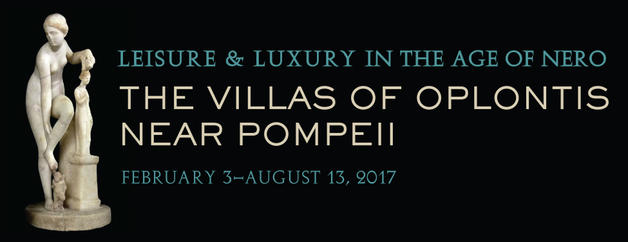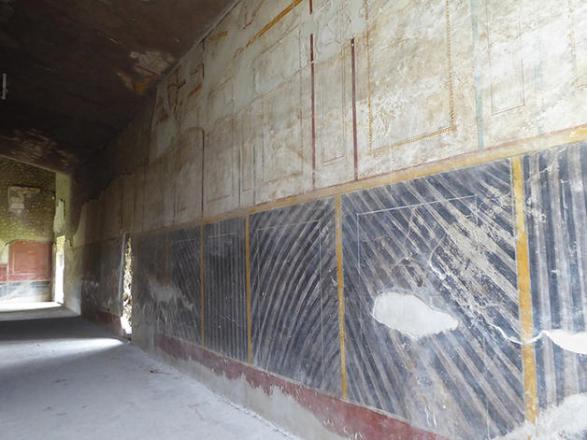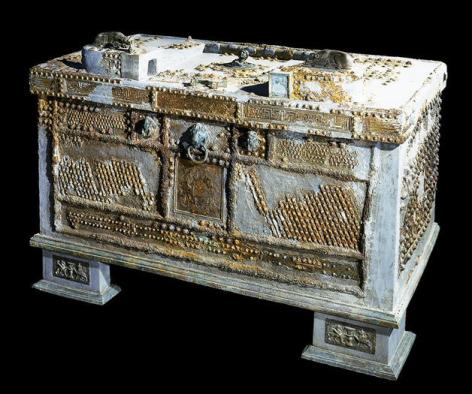The Pioneer Valley in Northampton, MA is an epicenter of political and artistic activity. In the heart of this vibrant community lies Smith College, and the Smith College Museum of Art (SCMA). This college museum has been ranked among the best university museums in the nation, and has a collection of more than 20,000 works raging from ancient sculptures to contemporary video art. It is a great resource for Smithies like myself, as well as the community in NoHo and beyond. As a college museum, the SCMA keeps public engagement at the forefront – through both a range of marketing techniques and public programs such as free art making on the second Friday of every month, public and K-12 tours, and student programs such as the annual Night at Your Museum mini-gala.
For about the past six months I have had the privilege of being a staff member of the education department Smith College Museum of Art. In this job my responsibilities have included planning student events, setting up for public programming such as the aforementioned Second Friday activities, and designing and leading K-12 tours. These tours are perhaps my favorite part of the job, as they are when I get to most fully and dynamically engage with the public, whether through guided conservation, or other activities such as writing or drawing.
In addition to the permanent collection, this semester the museum is also hosting the show “Leisure and Luxury in the Age of Nero: The Villas of Oplontis Near Pompeii”, and much of our programming is centered around this special exhibition. The show features pieces from both Villa A and Villa B of Oplontis – a city not far from Pompeii, that would have rested on the coast before the eruption of Vesuvius in 79 BCE (and which now lay about a mile inland due to the resulting change in the coastline of the area). Villa A is the luxury villa – thought to be the summer home of the wife of Emperor Nero. The Villa featured at least 99 rooms, with innumerable fineries from frescoes and sculptures to items such as oil lamps and vases. Villa B is the working “villa”, though it really would have served as more of a place of trade, which made the luxury of Villa A possible through the production and trade of items such as wine, fish sauce, and olive oil. Villa B is also the site of 54 skeletons adorned with their finest – thought to be occupants of the villas or perhaps Oplontis more broadly, who died waiting for a boat that never came to save them.

For more information on the exhibition, visit: https://www.smith.edu/artmmuseum/On-View/Leisure-and-Luxury-in-the-Age-of-Nero-The-Villas-of-Oplontis-near-Pompeii/Contents/Introduction
This is Oplontis. During the run of the show the SCMA hopes to not only share the objects themselves, but also the stories of the artifacts and people from this place. Northampton is the third and final stop of this show, which has previously been installed at the Museum of the Rockies and the Kelsey Museum of Archaeology. Many of these pieces have never been on display before, much less having been out of Italy. Due to the magnitude of this exhibition, and the fact that the SCMA is its only east coast location, it has a long run (February 3 to August 13, 2017), and a considerable amount of extra public programming, such as lectures and associated exhibitions at other sites, such as Smith’s own botanic gardens.
As both a Smith student and a museum staff member, I have been able to get a complete view of this exhibition: from watching the process of installation, through engagement with middle schoolers on tours, to both planning and attending Night at Your Museum and listening to the reactions that Smithies share with each other outside of the walls of the museum.
The Oplontis exhibition is installed on the first floor, in a gallery with glass doors and a large central window. This arrangement made it easy to peek in and see how installation was progressing as I headed into the education office through the two-week installation period at the end of January. Day by day the exhibition came together. Slowly the cubiculum of luxury Villa A appeared, as a life size recreation was installed in the corner of the gallery-turned-Villa. Behind it, a fresco wall developed like a jigsaw puzzle, with fragments that had been blown off in the explosion hung over a full-wall reconstruction of what the wall would have looked like. The edges of the fragments, like puzzle pieces, filled in the image of what once was.
Before the exhibition had even officially opened people were streaming in for member previews. Ever since the gallery has consistently had visitors. There seems to be a constant occupancy, if not by an official group then by museum members or other community members. This exhibition seems proof of human fascination with the past.
This fascination was demonstrated clearly to me in a recent seventh grade tour. The team of student educators divided up the fifty-plus students into our groups and off we went into the galleries, with the main event being the Oplontis exhibition. My group explored the second and third floors first – looking for images of deities, posing like sculptures, discussing Roman daily life and portrayals of it. From here we finished in Villa A and in B.
In Villa A we thought like the sculptures – giving them a voice by imagining what they saw as they looked out over lush gardens and the picturesque reflecting pool. We imagined standing by, watching the richest Romans visiting the villa, and seeing the enslaved people that attended them, their lives so controlled that they could only walk down marked hallways, whose zebra-striping was intended to hustle them along. Everyone then wrote speech bubbles for the sculptures. The seventh graders were – of course – most taken with the goddess Nike, whom they were all familiar with.

Image of painted zebra striping on walls at Oplontis, Photo by Jessica Nicoll, from https://www.smith.edu/artmuseum/On-View/Leisure-and-Luxury-in-the-Age-of-Nero-The-Villas-of-Oplontis-near-Pompeii/Contents/Oplontis-Photo-Journal
In Villa B we talked about the people. Instead of telling the stories of the objects, we talked about the lives of these ancient people. We talked about skeleton 27 – pregnant, found with precious jewelry. We talked about the Strongbox – an ancient safe/ status symbol that would have been positioned right at the doorway of Villa B. We thought about how big it is and what could be inside. We wondered why perfume and simple jewelry was found in this case with the elaborate locking mechanism, rather than its contents being the kind of riches found with the skeletons. We talked about sentimental value. We talked about modern values. Then, having thought about deities and about people and about objects and how to connect them all, the kids drew what they would keep in their own strongboxes.

Strongbox, image from: https://www.smith.edu/artmuseum/On-View/Leisure-and-Luxury-in-the-Age-of-Nero-The-Villas-of-Oplontis-near-Pompeii/Contents/Image-Highlights
In short, through these objects and their stories we tried to find empathy.
Museum education is about inquiry and empathy. It is about taking what we know and what we don’t and asking people to get in between those things and explore. It is about asking questions that we don’t have answers to, and answering questions in every way you possibly can. Education is about making connections. Inquiry: What do you notice? What do you think is going on? What in the work makes you say that? Empathy: the big question. The “aha” moment. The realization that the heirlooms found in the Strongbox are not so different from the things we want keep safe today. Those basic questions in the toolkit – the “what” moments – are just the start. They must be supplemented with conversation and patience and sometimes colored pencils in order to get to the big thoughts – the “why” moments, the “aha”. Then you hope that those whats lead to more whys which lead to ahas, and that this process continues on and on – inside the museum and beyond.
This post has been written for a contest hosted by Museum Hack, whose mission is to engage museum goers through “Renegade Tours.” So, engage with this post – like, comment, and share! For more information on the contest, visit: https://museumhack.com/writing-contest/. For more information on Museum Hack, visit: https://museumhack.com/.



Oh, Natalie, how I wish I could be on one of your tours of this exhibit. I know you really bring it all to life!
LikeLiked by 1 person
Natalie, your article made me feel like I was on a tour of the exhibit with you and the students. Your excellent questions and insights help the students understand what these artifacts represent. I hope one day I will get to take one of your museum tours!
LikeLiked by 1 person
Great article, Natalie! I would love to come see this exhibit- have always been fascinated by Pompeii. What a cool job you have at a very renowned museum! You are enriching many lives, including your own.
LikeLiked by 1 person
WOW! You did an amazing job on your review/article about this exhibit. Your words were so clearly and perfectly descriptive that it made me feel like I was walking behind you thru the days and seeing things from your eyes. Well done! How lucky to have such an amazing museum near your college. Thanks for sharing with all of us.
LikeLiked by 1 person
Wow….great job. I am excited that your mom will get to see this next week!
LikeLike
Please read the article my Natalie wrote. Would love it if you would also like/comment/share. Can’t wait to see this exhibit!!!
LikeLike